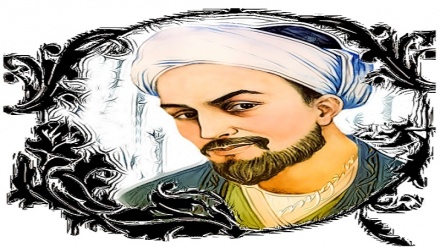Iranian notables, sources of global honor (93)
Welcome to the 93rd weekly episode of the series Iranian Notables, Sources of Global Honor. One of the important factors in identification of the history and background of an ethnicity is to stay focused on historical monuments. One of the important historical monuments is sites of pilgrimage. The historical functions of the site of pilgrimage of Mir Seyed Ali Hamedani are of paramount importance due to a bond which it has established between the religion and ethnical culture of Tajiks.
We said that the great Iranian mystic, Mir Seyed Ali Hamedani, lived in 8th Century AH. Born in the city of Hamedan, on 714 AH, Hamedani completed his preliminary studies in his hometown. Later on, he learned the science of hadith, philosophy, and mysticism under the prominent lecturers of his time. His lecturers deeply influenced him, leading him toward efforts for purification of soul and spiritual growth. Furthermore, his lecturers urged him to promote the divine religion of Islam, overseas. He continued this mission of the rest of his life, while also grooming countless students. Hamedani was highly respected by people, from all walks of life, in the majorities of cities of Iran, Central Asia, and India. In addition to piety and devoutness, he highly excelled in sciences and philosophy, and mastered the rational and traditional sciences of his time.
After Hamedani’s demise, his children and grandchildren in Hamedan, Kashmir, Balkh, and other regions, continued his activities and made utmost efforts to guide people.
We also spoke of the tomb of this great mystic, which is situated in Kulob, Tajikistan, and which is a site of pilgrimage, while also pointing out the role of this site of pilgrimage in cultural exchanges.
One of the important factors in identification of the history and background of an ethnicity is to stay focused on historical monuments. One of the important historical monuments is sites of pilgrimage.
The terms of construction of an Imamzadeh Holy Shrine, and its date of construction, as well as the motives behind its construction, and the related Islamic narrations, all and all help clarification of the historical ambiguities. The historical functions of Hamedani’s site of pilgrimage are significantly important due to the bond it has established between the religion and ethnic culture of Tajik people.
One of the other functions of Hamedani’s tomb is its artistic function. Art is a phenomenon that has long occupied man’s thoughts, and has taken shape in different aspects of human life. The completion of an art takes place based on worldly and religious motives.
Islamic principles and rules and regulations are considered as some of the most powerful religious motives in Iran and Central Asia. After the conquest of Iran by Arab Muslims, Iranian art served the divine religion of Islam, gaining a new meaning under the influence of Islamic rules and regulations. The redefined concept of Iranian arts can be observed in Islamic religious buildings. Some of the religious buildings which have been constructed in Iran and Transoxiana in the post-Islamic era are the sites of pilgrimage, Imamzadeh Holy Shrines, and the tombs of mystics, such that they are considered as a collection of Iranian and Islamic works of art.
Religious sites such as mosques and tombs have been considered as important centers for creation of works of art. These centers have been appropriate sites for maintenance of artistic works, and have also introduced Iranian-Islamic art. The sites of pilgrimage, via their artistic functions, convey the Islamic concepts to others via the language of arts, pictures, and colors. Tile works, brickworks, plasterworks, paintings, engravings, and decorations with cut pieces of mirror, are all the clear manifestations of Iranian and Islamic art.
Presence of museums in tomb complexes is considered as one of the strong points of these sites, which draw the attention of a significant number of pilgrims, and domestic and foreign tourists. This in turn highly contributes to development of rich Islamic culture, introduction of mystic and religious figures, and identification of the considered regions. The creation of artistic works, such as paintings, and calligraphy, which are usually used for decoration of museums, in addition to introduction of the talents and feats of local artists, show the convergence of these works of art with Islamic culture and civilization.
The museum built next to Hamedani’s tomb in Kulob highly resembles museums that have been constructed next to Holy Shrines in Iran.
Those, who attend religious sites, render their cash donations and other gifts to the sites of pilgrimage. Additionally, these sites usually maintain many endowed buildings and plots of land. The sites of pilgrimage highly contribute to the economic growth of the region due to the cash donations and gifts that pilgrims hand over to the religious site. An important part of the earnings of the site of pilgrimage is allocated in economic activities, which in turn boosts the regional economy.
Meanwhile, Hamedani’s tomb attracts tourists, especially foreign tourists; and naturally the presence of tourists and pilgrims in the city of Kulob thrives and boosts the economy of that city.
MR/SS


